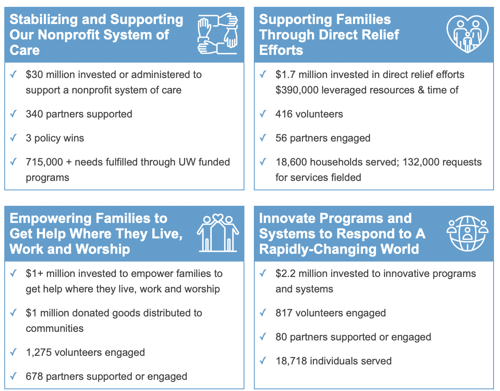Is it just us, or has the terminology ‘nonprofit impact’ become trite and meaningless? The very nature of nonprofit work creates ‘impact,’ but how? Is it quantifiable or just a feeling?
According to Give.org’s Special Report: Charity Impact, donors are equally confused when it comes to the phrase ‘nonprofit impact:'
- 47% of US adults surveyed don’t understand the term ‘charity impact’
- 53% of those surveyed who stated they understood the term had differing opinions on the meaning – some of these differences were realized across generations and giving levels
40% of Gen Z believe ‘charity impact,’ is based upon “organizations reaching defined goals” whereas the majority of Matures believe it is “the quality of the organization’s programs.”
One commonality among givers (no matter their generation) was that charity trust is the most important component in the donation process. Overall, 25% of those surveyed indicated that “an instinctive or gut feeling” was the most important component in the donation process; this followed “information on the charity’s impact” which 31% of respondents indicated was the most important.
What does this tell us?
Donors need clarity regarding a nonprofit’s mission – no matter the generation in which they fall into or the dollar amount they contribute. Without this clarity of impact, they may be less likely to trust your organization and give.
Now, with the advent of other means to make an impact, including contributing to social enterprises or engaging with activist organizations, traditional nonprofit organizations face even greater competition. This aggravates the need to further understand the reasons your donors give.
The Give.org report indicates that “giving directly to individuals” was the most helpful alternative to giving to a nonprofit organization with 15% of respondents indicating “activist organizations” were the most helpful and 13% indicating “for-profit business” were.
What’s a nonprofit leader to do?
1. Define what impact means to each donor.
Return to your donor personas. Identify their motivations to give. If you don’t know the answer speak with your development and program teams, or just ask your donors!
2. Ensure you have the right nonprofit technology in place to capture impact and fundraising data.
Without individual contributions or grants, your organization can’t create impact – no matter your definition. It’s critical to have a nonprofit CRM, such as StratusLIVE 365, in place to collect, track, and analyze individual gifts. Program staff can then leverage this data to efficiently budget for their projects, build and track objectives, and reconcile budgets against those tasks.
All this leads to increased transparency, better results, and enhanced trust with donors (which we now know is the most important component of the donation process).
3. Communicate the impact.
Now’s not the time to be shy about your programs' results. This is your organization’s opportunity to dispel any myths and share how your donors’ gifts contribute to your mission.
Here are some means in which you can share your impact:
- Impact reports with stories and statistics
- Videos
- E-newsletters
- Phone calls
- Handwritten letters or postcards
- Social media content
Keep track of your donors' preferred communication methods and share (perhaps even over-share), the results of their donations.
We love this example of donor impact communication from United Way of Greater Cincinnati. The organization penned a letter from their CEO, Moira Weir, identifying their four fundamental impact strategies along with the dollar amount invested in each area, volunteers and partners engaged, and individuals served.

The email ends with a promise to send weekly emails with their progress and an expression of gratitude for their donors.
Tracking impact is challenging and time-intensive work - let alone the process of identifying it. However, once you and your teams work to determine this, your work will become more meaningful and your donors will more clearly understand the power of their gifts.
If you don’t know where to begin with outcomes or impact definitions - download our whitepaper: A Three-step Approach to Outcomes-Based Program Delivery and Fundraising.







